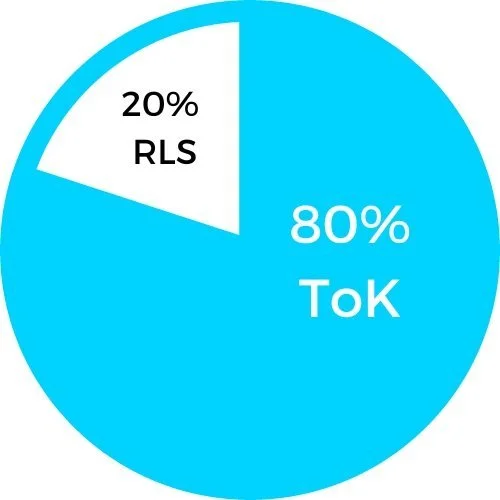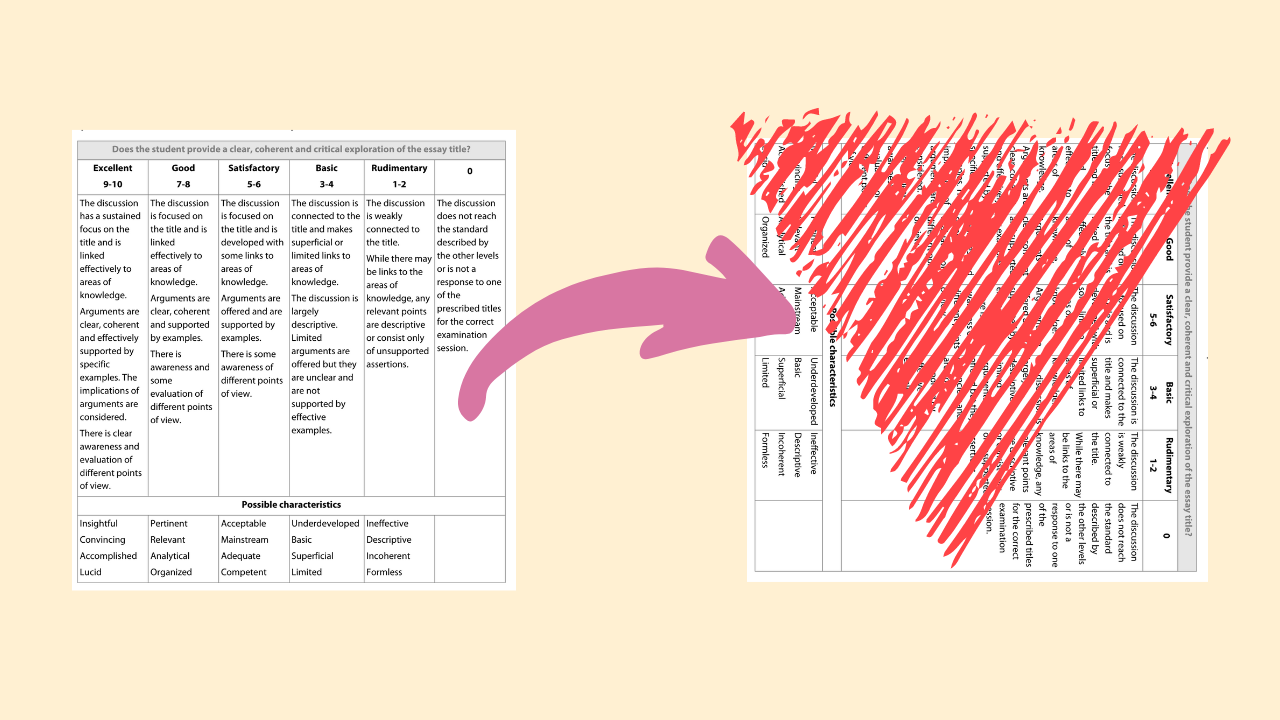5 (more) essential tips for marking the ToK Essay Draft.
This post comes in response to feedback from a video that I made on marking the ToK Draft Essay (we’re all starting in different places on this ToK journey) - those a little further on their ToK Journey as I focus more on the actual assessment of the content of the essay.
Now, I can’t replicate an IB Cat 2 workshop, neither would you want me to, so what I will do is run through 5 big checks that I make of the content of the essay when I’m marking the Draft.
1. Is the focus of the essay on knowledge arguments or on RLS ?
Most Draft Essays that I have seen have far too much RLS content, they’re overly descriptive of the examples used, and dedicate far too many words to the RLS. This is entirely understandable - DP students have probably spent most of their educational career being assessed on the accuracy of their understanding of content. In ToK we’re asking them to do something a little different - we’re asking them to look at the construction of that content - this is a leap that many students find difficult to make. We can use the rough 80-20 rule here: 80% knowledge to 20% RLS description.
I usually ask students to highlight knowledge & RLS content in different colours on their Draft essays to help them to have a visual representation of the difference.
2. Are definitions consistent throughout the essay ?
Most students realise that the definition of concepts and terms is key to being able to write the ToK Essay. However, students will often change their definitions, or even forget about them during the writing of the essay. Changing definitions can be a strong evaluation point if they find that an earlier definition was insufficient, but this must be done explicitly, and shown to be grounded in the exploration of the PT.
Recent examiner’s reports have advised that students define terms within each AoK rather than at the beginning of the Essay - this is a good way of reducing the risk of inconsistency in definitions within the essay.
3. Rough Band Placement. (pyramid)
The essay assessment instrument has 5 ‘bands’ or ‘levels’, IB have provided characteristics for each band. I think we can consider broadly what we will find in each essay band - I call this the assessment pyramid.
General talk through the pyramid, as shown in Canva Slides.
Now, I know that this is just a further precis of the assessment rubric itself, but sometimes there’s a wood & trees problem - this is my attempt to see the wood.
4. Signposting & LTQ.
Sometimes the Draft Essays can be super confusing: concepts, AoKs, Knowledge Arguments, RLS are all mixed together, sometimes contradictory, often incoherent. If they’re confusing for us as teachers imagine what they’re like for the Examiners. A simple way to start to unravel is to ask the student to signpost the key elements of the essay. I ask them to add sentences which show me where the main elements are, for example:
“My Knowledge claim in AoK ____ is…,”
“This is supported by the RLS ________”
“An evaluation of this argument is _________”
And most importantly by adding a sentence at the end of each paragraph that starts with:
“Linking back to the prescribed title this means that……,”
Signposting the main elements, and explicitly linking back to the question means that there is very little risk of the essay being assessed in the lower 2 bands. It ensures that the student has the basic elements in place to get at least 4/10, which means they’ll pass ToK.
Signposting also helps the examiners who are serially reading essays written in a range of styles, of varying quality etc. The examiners are looking to award marks, this is much easier to do if students have signposted the content in their essay.
If the signposting is a little clunky after they have developed their essay it can always be taken out before final submission, just like stabilisers on a kid’s bike.
Team work makes the dream work.
5. Team Work:
My final tip is teamwork. Assessing ToK Essays is no easy task, it’s complicated for everyone - I’ve seen senior examiners significantly disagreeing over the marks awarded to an essay. So, it’s important to remember that no ToK Teacher is in this on their own. Work with other ToK Teachers either in your school, or in your local ToK network. If you are the sole ToK teacher in your school, and there is no local ToK Network get in touch with another DP school- I have always found colleagues to be generous and welcoming.
In collaboration with other ToK teachers you can problem solve, moderate, and standardise. You can pick apart exemplars and share previously assessed essays. No one expects you to have all the answers, this is a synergistic process, and we’re all in this together.
I hope that you found those tips useful. If you have any suggestions for further content please don't hesitate to contact me, Daniel@TokToday.com.
Have a great day!
Daniel, Lisbon, Jan 2023



